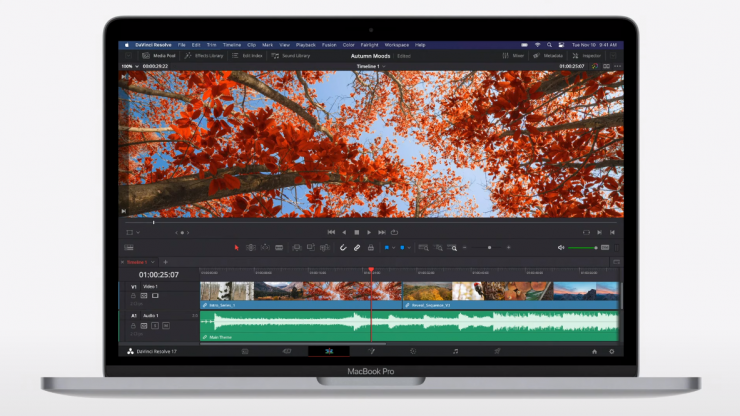

In custom silicon enhanced tasks like HDR video and high-performance video editing, performance can be as much as 800% better. How fast is it?Īpple are claiming from their own testing with ‘an industry-standard benchmark’, 3.5x faster than a 2020 MacBook Air equipped with 1.2GHz 10th gen quad-core Intel Core i7 CPU.
#Davinci resolve for mac m1 pro
Missing today from the announcement was the Apple silicon powered MacBook Pro 16″ or a new iMac. 16 billion transistors v 11.8 billion, with unified memory architecture like the PS5. The M1 is not the same as the A14 in the iPhone. There are 4 performance cores and 4 high efficiency cores. Only the MacBook Pro 13″ has any active cooling. However despite the integrated graphics, it breezes through video editing in demanding apps like Resolve. Apple GPUs playing the latest games? Maybe! To take on Nvidia would be a great thing, if Apple really wants a bigger foothold in the overall PC industry, this is one path to go about it.Īnyway, so what about somebody who just wants a machine to edit 10bit 4:2:2 on without it stuttering? Well the new M1 powered MacBook Pro 13″ may well be VERY interesting to get hold of for that.Īpple M1 sits in an integrated SoC, with soldered RAM modules, and an integrated GPU – and a very small mainboard, barely any larger than the one in a top of the range iPad. 10bit 4:2:2 H.264 editing performance is pretty woeful on Intel and AMD CPUs, let’s admit it.Īlthough for the foreseeable future Apple silicon will remain in small & light consumer Apple devices, who knows where the path may lead in the future? Apple silicon in a high-end desktop Mac Pro? Likely. There are some big claims Apple is making for their new silicon.įor certain, the duopoly of Intel and AMD needs challenging even if this is very much a closed system available only for MacOS. How about editing 8K ProRes in DaVinci Resolve on a 13″ Macbook?


 0 kommentar(er)
0 kommentar(er)
